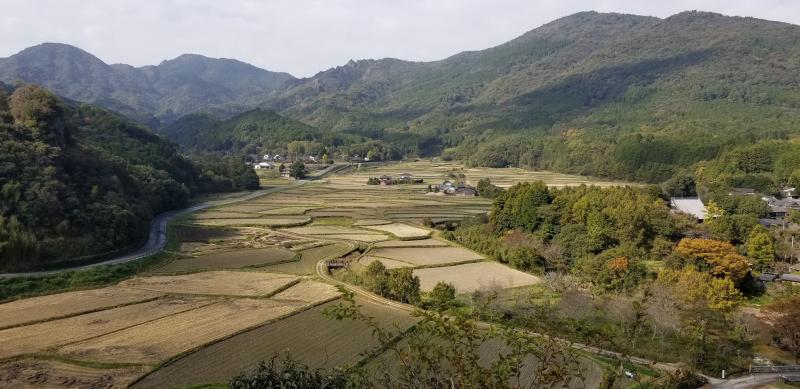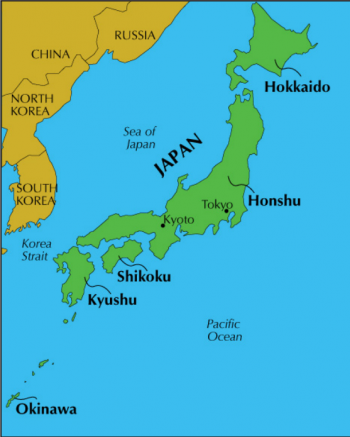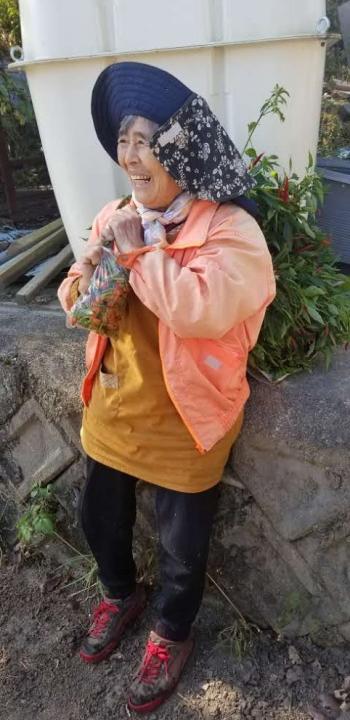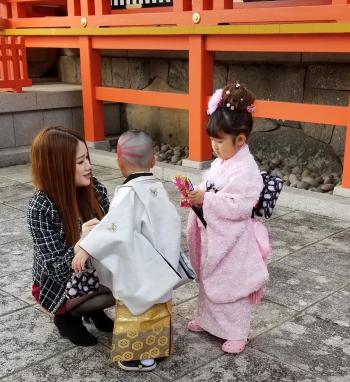Hiking Japan’s Kyushu island
This article appears on page 6 of the February 2021 issue.
Though our November 2019 tour would be the first time that Road Scholar offered a hiking trip in Japan, their local partner, Walk Japan, was an expert at this type of trip. Offering a great hiking experience on clean, well-maintained trails through fields with lovely vegetable gardens and terraced rice paddies, forests, streams and waterfalls, the journey was planned to take in the fall colors, and they were near their peak, with bright-red and salmon-pink maples, bright-yellow ginkgos and evergreens.
Pre-trip materials described the path conditions and the elevation gain for each hike.
About the tour
We hiked to remote shrines and temples, which varied between simple and ornate. Each had unique characteristics, such as huge Buddha statues carved into the rock face or, in a high cave, figures of hundreds of disciples, each with individual features and different postures.
We went to a beachside shrine where a local historian was delighted to tell us about the former importance of the site, and he and the local priest proudly showed us the 8-foot-long ceremonial sword that had been there for about 200 years.
Another memorable site was a small museum devoted to the story of Christians who had to worship in secret when their religion was forbidden in Japan. A wooden crucifix made to fit inside a statue of Buddha was a vivid reminder of resourcefulness in the face of persecution.
We had never been to Japan, but the other six travelers in our group were “old hands,” having visited the country multiple times. However, none of us had ever been to Kyushu, the southwesternmost large island in the chain. Like the rest of Japan, it is mountainous and scenic, but, unlike the central islands, it is losing its population, in spite of its agricultural productivity. The trip gave us a great cultural appreciation of rural Japan and the endangered way of life there.
We saw a lot of evidence of depopulation — abandoned houses and family cemeteries that had clearly not been visited regularly. We climbed to a temple where an old lady was the only resident caretaker since her husband died; her son came on weekends to serve as the resident monk, a break from his weekday work as a dentist.
Most fields were cultivated, and fields and gardens were orderly and lush, but almost all the farmers we saw were elderly. They were incredibly strong and healthy. We spoke with one woman in her 80s who was carrying a bunch of hot peppers, with their foliage, that must have weighed 20 pounds. (She let us heft it!)
Walk Japan is dedicated to supporting the local communities and, in particular, to supporting local entrepreneurs in hospitality and crafts by bringing visitors. We enjoyed numerous small restaurants and bakeries where young people were trying to revitalize the area with their new ideas, using local produce, and craft galleries, many in repurposed historic buildings, where traditional skills mingled with new designs.
Traveling independently in this rural area would be almost impossible for anyone who does not speak Japanese. We really needed the assistance of our group leader at our accommodations and at the places we visited, for translation and for the cultural explanations we needed in order to behave appropriately.
Most of our days consisted of hiking, sightseeing, some bus travel and staying at ryokans, or traditional inns, with onsen (hot spring) bathing and dinner on the premises. (We did spend two nights during the trip at business hotels so that participants could use a coin laundry.) This routine made us feel healthy and pampered and emphasized that we were participating in a different, and valued, way of life.
Interesting accommodations
The ryokans varied a bit, but all had spacious rooms with high, wide windows, seating of some kind near the windows, an alcove with an ikebana flower arrangement, and futon beds with cozy quilts. In most places, the futon and bedding were prepared by the staff while the guests were at dinner.
The rooms had en suite toilets and sinks, but most had no showers or tubs.
The Daimaru Ryokan was notable for its beautiful Japanese and Western-style Impressionist art and bronze animal sculptures, on display in both the public spaces and individual rooms.
Kyushu is known for its mineral hot springs, long prized for their relaxing and healing properties, and all of the ryokans had onsen baths. We had to learn the protocol for onsen bathing, which was the same everywhere, though the onsens themselves varied in size, setting and landscaping. In almost all, there was a choice of indoor or outdoor pools, and all of them had separate facilities for men and women.
There were showers adjacent to the pools, with soap and shampoo dispensers. Guests were expected to leave their clothes and towels in a bin in a changing room, taking only a small towel into the room with the pool. After showering thoroughly, you could get into the hot pool and stay as long as was comfortable. It is considered beneficial to leave the minerals from the onsen on your skin instead of showering after bathing.
The onsens were open in the morning as well as the afternoon, so it was possible to bathe before hiking as well as after hiking.
A meal to remember
Dinner at a ryokan is an amazing experience. Everyone wears a yukata (a cotton robe with a sash) and a long, loose jacket, all provided by the ryokan.
A tray with several small plates of appetizers, mostly vegetables, and often a plate of sashimi, delicious and super-fresh raw fish with seasonings, is provided first. That might be followed by a tempura of vegetables or fish, or soup, or you might be presented with an individual burner, where you can boil vegetables and tofu, fish or meat, or perhaps an individual grill on which to cook assorted items.
Meals have multiple courses and end with a dish of rice with an assortment of pickled vegetables and a bowl of miso soup, then dessert, usually fruit, pastry or ice cream.
It’s an abundant meal but healthy, with a lot of variety, lots of vegetables, a fair amount of fish and a little meat. It’s also a lovely experience. The succession of courses is a surprise, each item beautifully presented in a separate dish, sometimes garnished with leaves or other seasonal trimmings or with edible flowers or relishes.
Sake, often a variety of sakes, plus beer and plum wine were options that could be charged to your room (about $8-$16, depending on the sake’s quality).
Breakfast also involved a variety of foods, beautifully served, and coffee was provided.
The details
Our trip also included an overnight farmstay. Groups of two participants were assigned to families in the Bungo-Takada area, and all of us left with warm feelings for our hosts, though language was a barrier at some moments. Translation apps helped somewhat, especially if you didn’t rely on the voice-recognition feature.
Most groups had someone who was bilingual with them at some point during the farmstay, so that was a help. The experience could have been improved, however, with more detailed introductions and a question period with translation at the initial meeting.
Our group leader, Tetsuo Nakahara, shepherded us through the hikes, sightseeing, unfamiliar customs and transfers from point to point with warmth and enthusiasm. We also had at least one other Walk Japan staff member with our group at all times.
The cost for the 13-day Road Scholar (Boston, MA; 800/454-5768, www.roadscholar.org) trip was $8,099 per person, with a $360 single-room supplement. That covered almost all meals, accommodations, gratuities and transportation between all stops on the trip and to and from the airport or train station on Kyushu.
If you plan to spend extra money for gifts, souvenirs and alcoholic beverages or sodas at meals, you’ll need cash, since credit cards are rarely accepted in rural Japan and may not be accepted everywhere in the cities.
If you haven’t been to Japan before and can stay a bit longer, we’d recommend seeing Kyoto, at least. We were pleasantly surprised to learn that, though Kyushu is a separate island, it is served by the bullet train. (It costs about $150 to go from Kyushu to Kyoto and about $130 from Kyoto to Tokyo.)
The Walk Japan staff (phone +81 90 6704 7125, walkjapan.com) were extremely helpful in making travel arrangements and recommending places to visit in Kyoto.




